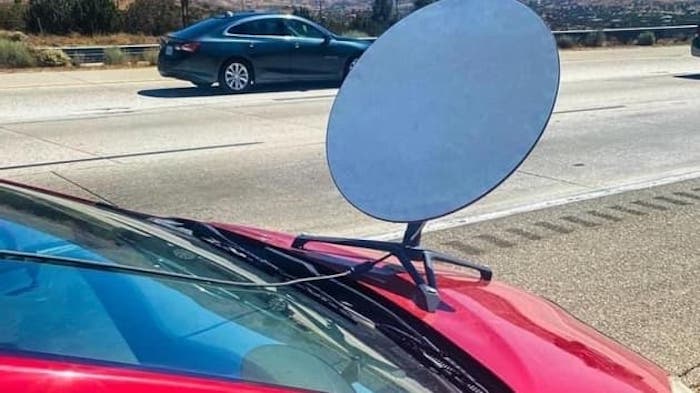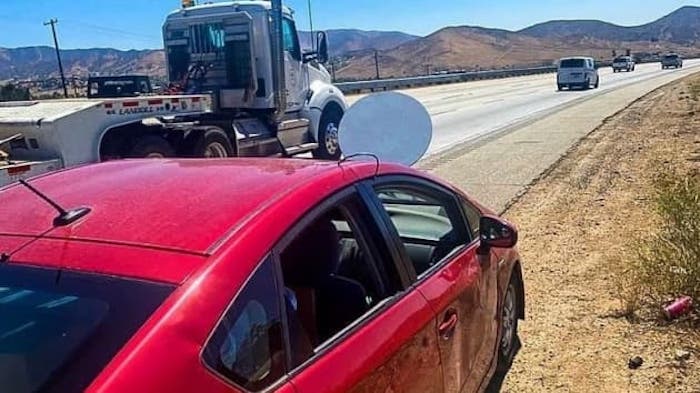A driver was ticketed in California on Friday for having what appeared to be a Starlink satellite dish bolted to the hood of his vehicle.
In a Facebook post describing the bizarre incident about 50 miles north of Los Angeles, a California Highway Patrol (CHP) officer wrote that he told the Toyota Prius driver: “I stopped you today for that visual obstruction on your hood. Does it not block your view while driving?” to which the motorist replied: “Only when I make right turns.”
The CHP officer then told the driver that, for safety reasons, it’s “illegal to mount a satellite dish to the hood” of a car, before booking him for a moving violation.
According to CNBC, the motorist said he used the dish to get Wi-Fi service for a business operated out of the car.
The incredulous CHP officer signed off from his Facebook post, saying, “These are the real stories of the Highway Patrol. Safe travels everyone.”
Starlink is a SpaceX initiative geared toward providing internet via satellites deployed in low Earth orbit. The company is already operating a beta service, with customers paying $99 a month for the service, plus a one-off fee of $499 for the equipment that includes the satellite dish for home setup.
While the company does in fact have plans to launch a Starlink service for vehicles such as aircraft, ships, and large trucks, SpaceX CEO Elon Musk said earlier this year said that the kit is still “much too big” for cars. Though clearly, not everyone is listening.
SpaceX launched its first Starlink internet satellites in 2019 and has so far deployed almost 2,000 of the small spacecraft via multiple rocket launches.
During a talk at last week’s virtual Mobile World Congress event, Musk confirmed that the Starlink broadband service is now up and running in 12 countries, with more coming online all the time.
The SpaceX CEO said Starlink currently has almost 70,000 customers, adding that the service could have as many as half a million subscribers within the next 12 months — a significant increase on the 10,000 customers it revealed that it had in February.
Musk said that with more Starlink satellites heading to low-Earth orbit this year, global coverage could be achieved as early as August, though national regulators will of course have the final say on Starlink’s ultimate reach.




